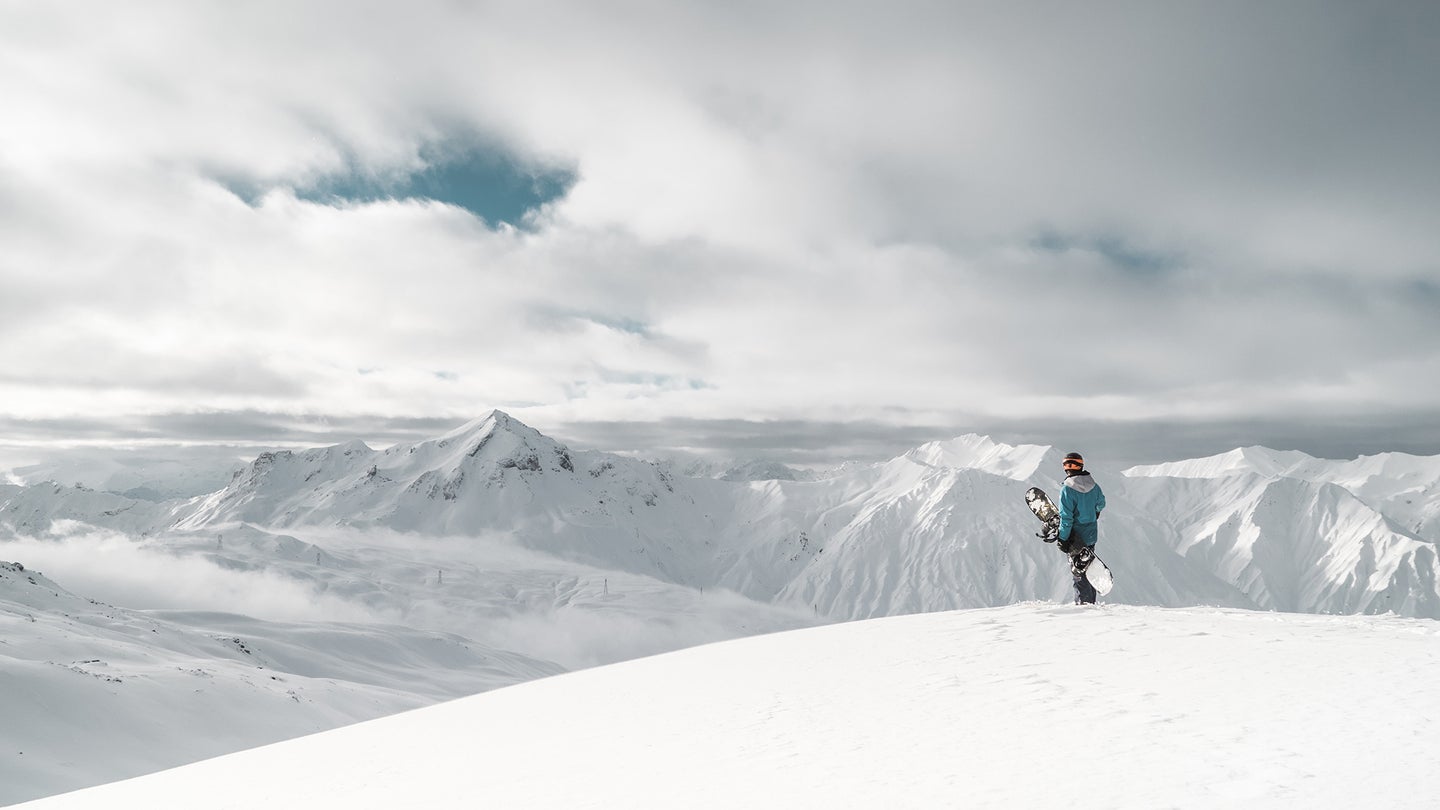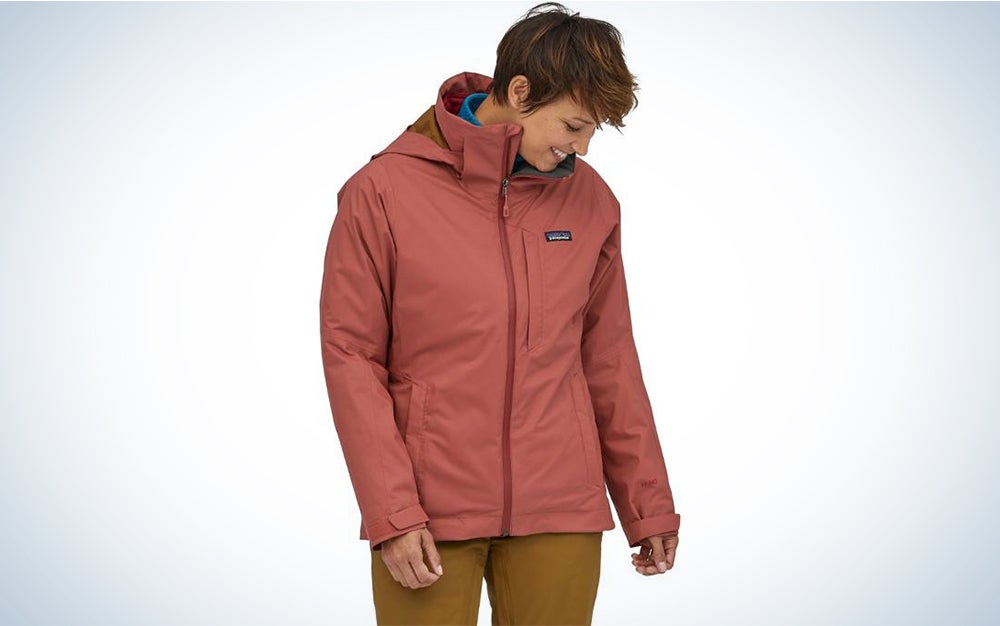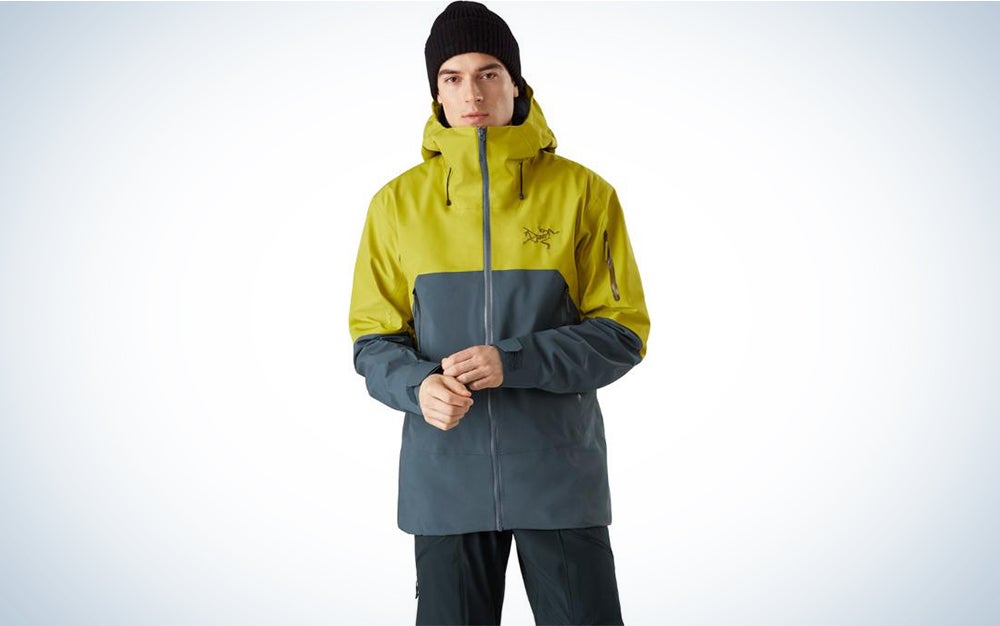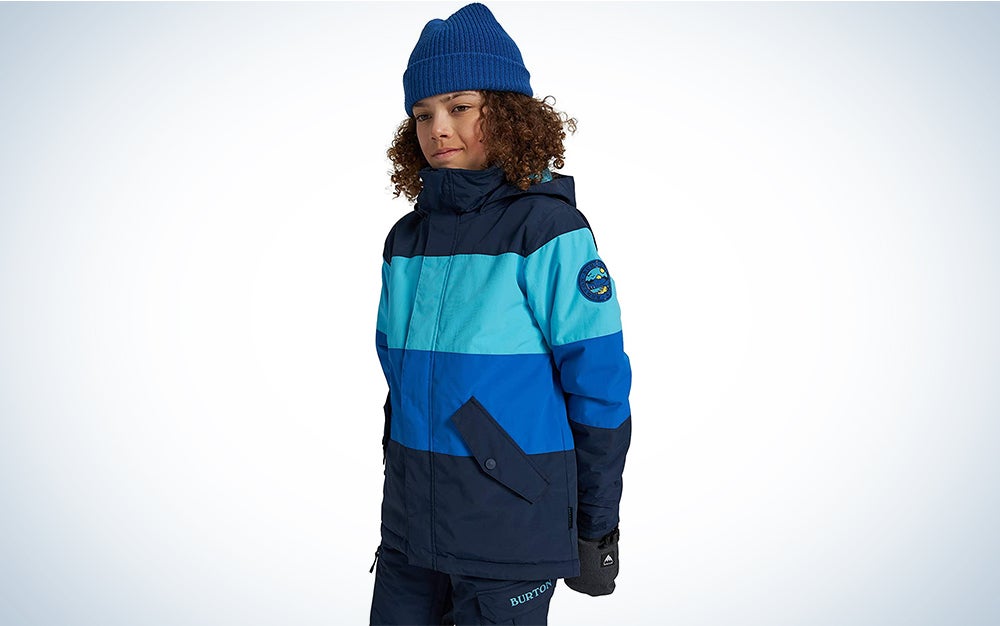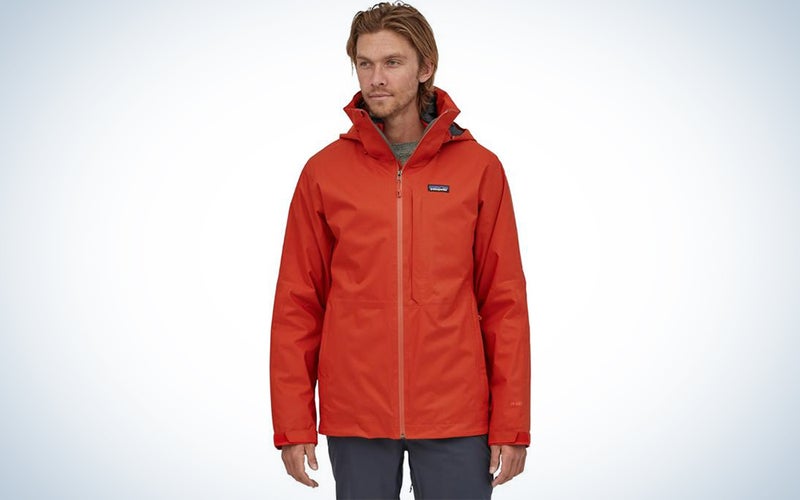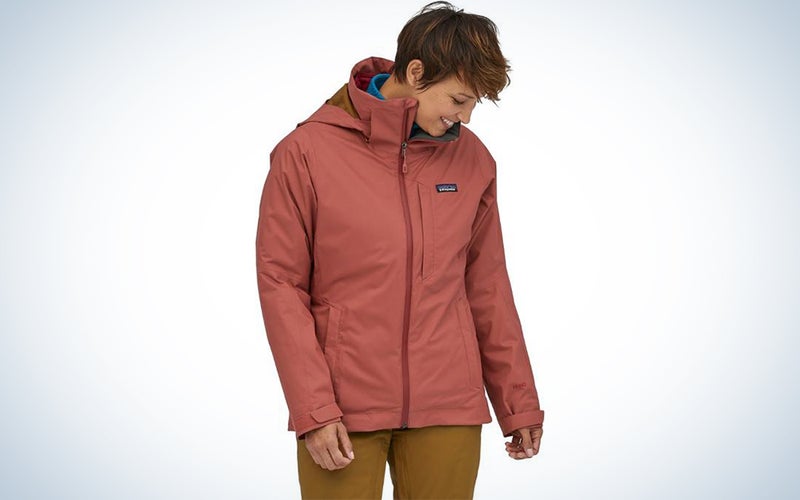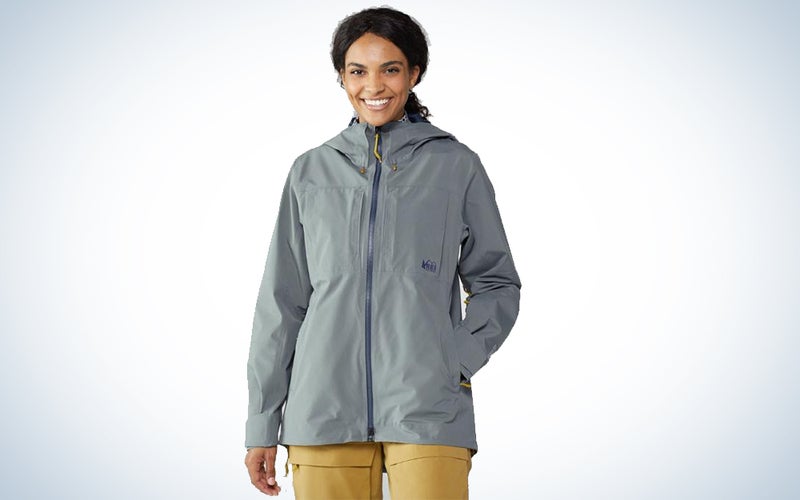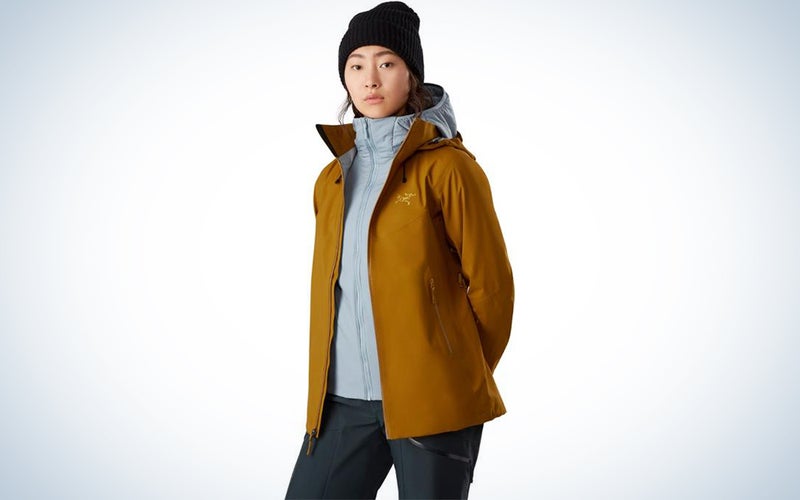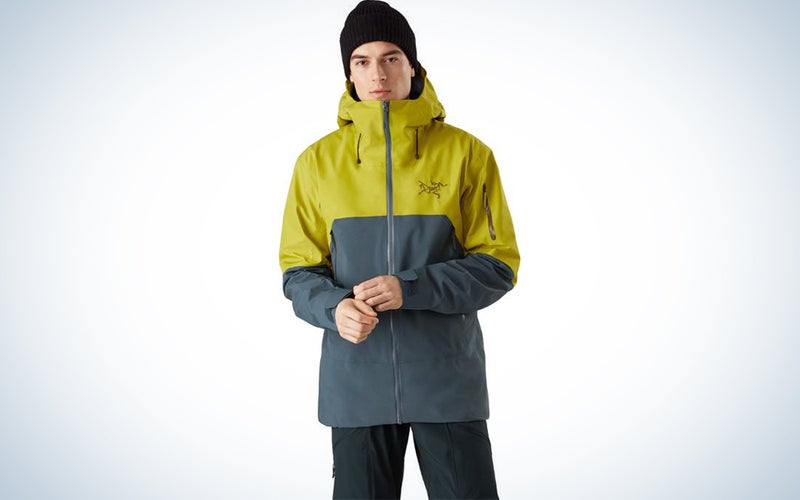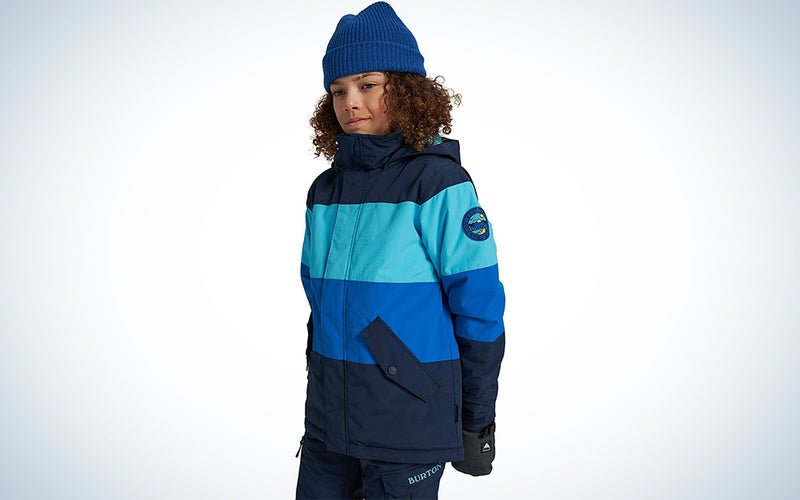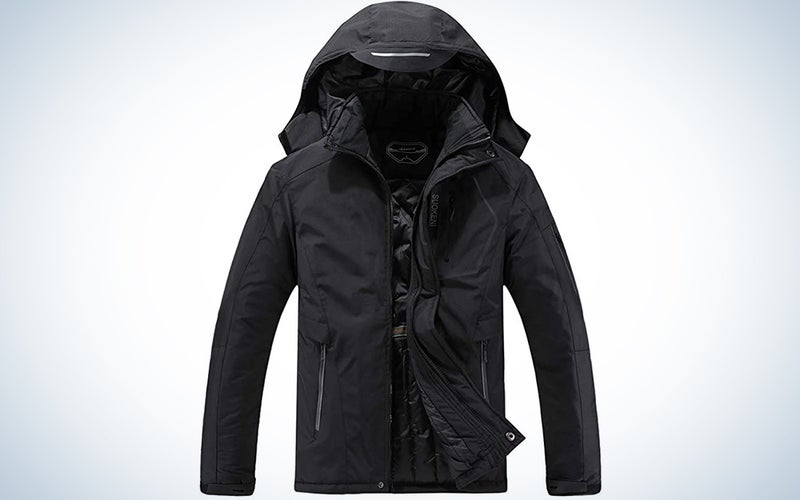We may earn revenue from the products available on this page and participate in affiliate programs. Learn more ›
If you’ve bundled up in cold and snowy conditions to hit the ski slopes, you might think that you don’t need a separate snowboarding jacket if you want to switch things up to do a few halfpipe tricks. It’s true that a ski jacket with sufficient insulation and waterproofing does provide protection against the elements—and that might be just fine for some people. However, the best snowboarding jackets offer coveted features tailored to the unique nature of the sport.
Ultimately, choosing the best snowboard jacket to match the rest of your snowboarding gear depends on your preferences, skill level, and the conditions in which you’ll be taking to the air. Snowboarding jackets can be made up of high-tech material suitable for intermediates and pros, or a variety of materials that emphasize comfort and versatility. Special features like zippered air vents, designated pockets, and taped seams can make your experience even better. Here’s what to look for to find one of the best snowboarding jackets, whether you’re hand planting or face planting.
- Best overall for men: Patagonia Snowshot 3-in-1 Jacket
- Best overall for women: Patagonia Snowbelle 3-in-1 Jacket
- Best for beginners: REI Co-op First Chair GTX Jacket
- Best for all-day wear: Arc’teryx Ravenna LT Jacket – Women’s
- Best for pros: Arc’teryx Rush Jacket – Men’s
- Best for kids: Burton Boys Symbol Jacket
- Best budget: Suokeni Women’s Snow Coat
The best snowboarding jackets: Reviews & Recommendations
The key differences between these ski jackets and showboarding jackets come down to fit and style. In many types of skiing, how fast you can make it down the mountain is a top goal. Aerodynamic designs need to fit snuggly to minimize resistance on your (hopefully controlled) descent. In contrast, the intricate movements required to stay on your snowboard as you execute flips, grab the heel or toe edges of the board, and rotate in mid-air, favor a looser fit. Even when you don’t bail in the middle of a move or unexpectedly land on your backside, you’ll also spend a lot of time seated in the snow to strap on your board, so a longer jacket is crucial to keeping your rear end from feeling the deep freeze. And with obvious parallels to the subcultures of skateboarding, snowboarding clothes are an opportunity to experiment with creative expression rather than fit into a traditional resort look.
Best overall for men: Patagonia Snowshot 3-in-1 Jacket
REI
The 2-layer outer shell is waterproof, water-repellent, and breathable, with a detachable hood, cuffs you can adjust to wear over or under your gloves to protect against gaps, and zippered air vents under the armpits for quick cooling. Wear the quilted and insulated inner layer by itself depending on the weather, or bundle up with the whole combo. The embedded RECCO® reflector is a nice feature in the event of an avalanche as part of a comprehensive safety plan. Plus, you can keep your feet warm and protected with some of the best snowboarding boots.
Best overall for women: Patagonia Snowbelle 3-in-1 Jacket
REI
The Patagonia Snowbelle is very similar to the men’s Snowshot, and is an excellent women’s snowboarding jacket that can be worn while snowboarding or skiing. The inner insulated jacket is reversible to either a smooth or quilted surface, with 60 grams of synthetic insulation that performs even in wet conditions. Design highlights include a back long enough to reach your hips and a powder skirt that can be attached to any of Patangonia’s snow pants to offer a comprehensive barrier against the weather.
Best for beginners: REI Co-op First Chair GTX Jacket
REI
At this price point, this is the best snowboarding jacket to acquire a high-quality shell when you’re still getting to know the sport. Stay comfortable with classic features including two-layers of Gore-Tex, a longer back hem, water-repellent zippers, and lots of room for adding insulated layers. What really makes this snowboarding jacket stand out are extra touches like the ability to detach the power skirt, a soft liner in the hand pockets, and cozy tricot fabric in the high collar to pamper your chin when you’ve tucked it in against the wind. Then protect yourself with one of the best snowboarding helmets.
Best for all-day wear: Arc’teryx Ravenna LT Jacket – Women’s
REI
This Arc’teryx jacket features brushed flannel on the inside for softness and warmth, plus waterproof and windproof protection courtesy of 3-layer Gore-Tex.
Enjoy the added security of RFID blocking materials to help ensure your passport and credit cards can’t be accessed by a scammer while you’re out and about. The powder skirt is removable once you’re off the slopes.
Best for pros: Arc’teryx Rush Jacket – Men’s
REI
The Arc’teryx Rush features a special material created in collaboration with Gore-Tex to deliver three layers of protection against water and wind. Pit-zips and pocket zips alike are fortified with their trademark WaterTight design, and the helmet-compatible hood protects while keeping maximum visibility. The sleek, color-block appearance leaves plenty of room for your awesome jumps, flips, and aerial rotation to take center stage. At just over 1.5 pounds, it’s easy to store in anticipation of your next adventure.
Best for kids: Burton Boys Symbol Jacket
Burton
This snowboarding jacket checks all the boxes of comfort and utility: a waist gaiter that’s compatible with Burton’s snow pants, DryRide insulation (their version of Gore-Tex) to keep kids from shivering when they work up a sweat, a hood that’s adjustable to fit a helmet, and taping of major seams for durability and protection from the elements. Their signature Room-To-Grow system makes this coat last more than one season, since you can let out the sleeves 1.5 inches when they start to get taller than you.
Best budget: Suokeni Women’s Snow Coat
Suokeni
The Suokeni Women’s Snow Coat is versatile enough to grab out of your closet for a brisk winter walk with friends or a trip to the slopes. Key features include adjustable cuffs for your gloves or mittens, a detachable storm hood, and a snow skirt. While it’s primarily made of synthetic material, this jacket includes a cotton filling to help retain heat. A DWR polymer coating repels water and the outer layer also protects against the wind. Consider layering for added warmth in colder temperatures.
Things to consider when shopping for the best snowboarding jackets
When you take a little time to familiarize yourself with the types of snowboarding coats on the market, you’ll be able to choose the perfect gear for your needs and budget. The best snowboarding jacket for you may change along with your relationship to the sport, but you can avoid over (or under) equipping if you understand the purpose of each feature offered as you shop.
Are you searching for versatility in a jacket?
If you’re looking to get the most for your money in a jacket you can wear at home, around town, or on the trail, gear with multiple functions is a good choice. The best snowboarding jacket for multiple functions is called a 3-in-1 jacket, which means it can be worn three different ways depending on the situation.
Look for 3-in-1 jackets with a waterproof and insulated outer layer, and an inner shell that can be easily un-zippered from the outer layer. If you’re lucky enough to hit the resort when it’s warm outside, the shell might be just what you need to stay dry and minimally exposed to the wind. Wear the insulated outer layer as an everyday coat, and both together when conditions are truly wintery.
Synthetic materials are generally the most practical option for snowboarding jackets. Down jackets may be known for their ability to retain heat, but they lose their power to insulate you when wet. You can buy down jackets meant for use in snowy conditions with additional water-resistant layers, but synthetic materials for the best snowboarding jackets have been researched, planned, and tested expressly under the powder-tasting conditions snowboarders face.
Are you new to the sport?
If you’re just starting out, purchasing a quality jacket at a lower price point allows you to learn what features are a must-have for your snowboarding style. How hot will you actually be on the trail or course when you hit your groove? What kinds of pockets will prove essential for your phone, gloves, and snacks, and whatever else you’d like to carry once you’ve left the lodge?
To get the full benefits of gear designed specifically for snowboarding as opposed to skiing, a mid-range shell jacket is a solid option. A well-designed shell with good water and windproofing gives you room to layer and doesn’t restrict your movement as you practice grabs and basic jumps.
The one feature beginners should definitely look for in a snowboarding jacket is an elongated back with a powder skirt (also called a waist gaiter), which creates a tighter fit of your jacket around your body so you don’t have the freezing sensation of snow traveling up your back when you’ve taken a spill or from loose powder in the wind. (And you will take a spill. Or three.)
Are you ready to level up?
Snow enthusiasts who are contemplating investing a significant amount of time in snowboarding should consider purchasing a shell-style snow jacket. Sometimes called technical shells, these jackets are meant to be worn with extra layers underneath in colder temperatures, and feature high-tech materials like Gore-Tex, eVent, and Omni-Tech. These materials help ensure your jacket is waterproof, breathable, and protective against the wind.
You’ll also want to think about what your days look like snowboarding. Are you a weekender who books a couple of nights at a resort and likes to ski, snowboard, and drive into town for fine dining or drinks? In that case, you might prefer a slightly bulkier shell with warmer insulation that you can keep on all day.
Remember, along with top technical fabrics for waterproofing, the best snowboarding jackets have taped seams to ensure that there is no room for leaks and that everything you’re storing in your pockets stays dry.
Are you a super-serious shredder?
There’s no question that making an investment in the best snowboarding jackets is a good idea when you’re at the pro-level —even if you never plan to compete. A comprehensive grasp of the terminology of the sport means you’ll recognize what each feature of a pro-level jacket is addressing, like spindrift, which the Avalanche Center defines as “fine grained snow being carried by wind or falling.”
Keep in mind that snowboarding jackets at the pro-level are designed for a specific purpose, rather than trying to cover all the bases of a day spent outdoors. A lighter and more portable technical shell may be excellent for water and wind protection but work best with additional specialized layers of insulation. You might also see additional layers of Gore-Tex or other highly technical insulation in pro-level jackets, and other types of fabric designed to stand up in the toughest conditions.
Expect pro-level gear to be made from the latest materials being developed for optimal mobility and protection, and subjected to rigorous testing and standards pro athletes can trust. Every detail should be thought-out carefully and questioned in the larger context of performance. You can definitely find stylish pro-level gear, but that style will be in service to the end game: ensuring you can give every run all you’ve got.
Are the kids coming with you?
With all clothing purchases for kids, there are numerous factors that come into play, many of which you can’t control. Kids lose interest in activities quickly, and grow out of clothes just as fast. Get the most from your money by seeking a coat with features that can adapt as they grow (such as Burton’s Room-To-Grow sleeves), and that they’ll want to wear to school, on snowy weekend adventures, and in the backyard building a snowman.
Unless your child is training or competing as a snowboarder, you don’t necessarily need a jacket designated only for snowboarding. After all, next week they might decide they’re going to be a downhill Olympic skier. If the jacket you choose has a waist gaiter to keep powder at bay and a hood that fits a helmet, that will go a long way towards making your time together on the mountain enjoyable.
Are you on a budget?
Snowboarders on a budget may be able to find significant markdowns on top brands like Burton, Arc’teryx, Columbia, REI, and Patagonia, especially at the end of the season. You might also consider thrifting lightly-used gear to get the most high-performance fabric and features for your dollar. If your interest in snowboarding and skiing is more casual or you need a jacket quickly for a getaway weekend, you still have options. You probably won’t be able to get fully waterproof materials at this price, but look for water-resistant and wind-resistant fabrics and a powder-skirt, and be sure to leave room for layering to make up for any lack of insulation. Here’s the best snowboarding jacket we’ve found on a tight budget.
FAQs
Q: How do I choose a snowboard jacket?
Once you gain a thorough understanding of the common features and jacket types described in this article, you’ll want to choose a snowboard jacket that has the features you need for your skill level, fits in with your other winter gear (i.e. if you already have a 3-in-1 jacket, a technical shell will probably be next on your list), and is compatible with your budget. After you’ve narrowed down the jackets that meet these specs, feel free to have fun with style and color.
Q: Are snowboard jackets warm?
The warmth of a snowboard jacket will vary depending on the type of jacket you purchase. Lightweight technical shells will have less insulation than a 3-in-1 jacket. For many snowboarders, layering is key to enjoying boarding in all conditions. Choose a jacket based on your entire snow wardrobe, rather than based on warmth alone.
Q: What is a good waterproof rating for snowboarding?
Waterproof ratings can tell you something about your gear, but it’s a better idea to take into account the quality of the whole garment and the conditions under which it will be used. The difference between a 10,000mm waterproof rating and a 28,000mm rating may not matter at all, depending on these other factors. If you choose a top brand jacket made with technical fabrics and quality craftsmanship, you’ll likely find the number you need— but if you search based on number alone, you could end up with a jacket with leaking seams or poor durability.
A final word on shopping for the best snowboarding jackets
- Best overall for men: Patagonia Snowshot 3-in-1 Jacket
- Best overall for women: Patagonia Snowbelle 3-in-1 Jacket
- Best for beginners: REI Co-op First Chair GTX Jacket
- Best for all-day wear: Arc’teryx Ravenna LT Jacket – Women’s
- Best for pros: Arc’teryx Rush Jacket – Men’s
- Best for kids: Burton Boys Symbol Jacket
- Best budget: Suokeni Women’s Snow Coat
The most important characteristic of snowboarding gear is performance that matches what you’re capable of at the resort or in the backcountry. The best snowboarding jackets keep you warm and dry, give you plenty of room to move, and offer features like powder skirts tailored specifically for the sport. Casual snowboarders might have one great jacket for both skiing and snowboarding, and serious shredders might have several jackets depending on the weather and terrain. Once you have the right gear, you can focus on the unparalleled thrill of fresh air and exercise that in its best moments, make you feel like you’re on top of the world.
Why trust us
Popular Science started writing about technology more than 150 years ago. There was no such thing as “gadget writing” when we published our first issue in 1872, but if there was, our mission to demystify the world of innovation for everyday readers means we would have been all over it. Here in the present, PopSci is fully committed to helping readers navigate the increasingly intimidating array of devices on the market right now.
Our writers and editors have combined decades of experience covering and reviewing consumer electronics. We each have our own obsessive specialties—from high-end audio to video games to cameras and beyond—but when we’re reviewing devices outside of our immediate wheelhouses, we do our best to seek out trustworthy voices and opinions to help guide people to the very best recommendations. We know we don’t know everything, but we’re excited to live through the analysis paralysis that internet shopping can spur so readers don’t have to.
